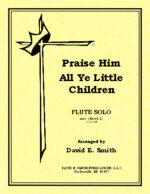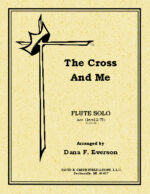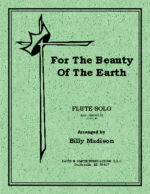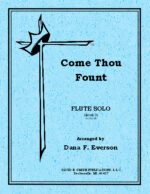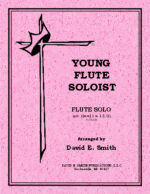| Instrument | |
|---|---|
| Level | 3 |
| Occasion | |
| Theme | (We Praise Thee, O God)(in manuscript at this time) |
| Writer | |
| Publisher | |
| Copyright | 1987 |
Prelude to “Te Deum”
$3.00
Related products
-
Praise Him All Ye Little Children
$3.50This solo with piano begins with a bold march statement with an elongated rhythm of the melody. The middle section is more expressive while the final section imitates the beginning, with a solid statement of faith.
-
The Cross And Me
$4.50This flute solo is highly reflective in nature and incorparates the titles of :At The Cross”; “There’s Room At The Cross For Me”; “Beneath The Cross Of Jesus”. The piece is gentle and offers the opportunity far a great deal of expression. While there is embellishment of the lines they are done with taste.
-
For The Beauty Of The Earth
$3.50This solo with piano begins with a simple statement of the tune with a middle section that uses motivic design, only to return to the opening statement.
-
Like A River Glorious
$4.50This is a flute solo that begins in a flowing manner and quickly accelerates to a more technical rendition of the tune creating a delightful atmosphere of this grand old hymn. It is effervescent and uplifting.
-
We Gather Together
$3.50This solo with piano makes a straight forward statement of the tune followed by a contrasting section using a new counter melody. It then returns to the opening theme.
-
Come Thou Fount
$4.50This bubbly rendition of “Come Thou Fount” is effervescent from beginning to end. It is filled with movement and excitement expressing intense joy throughout.
-
Young Flute Soloist
$12.95A solo collection with piano including: “Praise Him All Ye Little Children,” “Abide With Me,” “Dare To Be A Daniel,” “My Jesus I Love Thee,” “Away In A Manger,” “We Gather Together,” ” “Hallelujah! What A Saviour,” and “‘Tis So Sweet To Trust In Jesus.”
-


